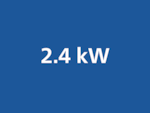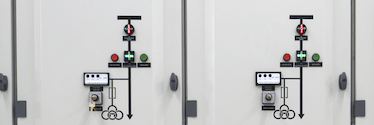Under-voltage Release Test
Circuit Breakers are equipped with an Under-voltage release if the related protection system has no supply voltage backup. The Under-voltage release is often found in industry grids, as it is a relatively cheap solution to make sure the breaker is opened when a battery failure occurs. An Under-voltage release may operate when supply voltage is between 35% and 70% of the nominal voltage and must operate when the supply voltage drops below 35%. In addition, the Under-voltage release prevents closing when the release has operated, i.e. after opening the circuit breaker.
During the test, the under-voltage coil is supplied, after which the breaker is closed. Then the voltage is ramped in steps from the nominal voltage down, until the voltage level is reached when the under-voltage release trips. This is the trip voltage. Then the voltage ramp ends.
Expert recommends
CIBANO 500
The CIBANO 500 can test all types of breakers. Its Medium Voltage Package includes all relevant tests on breakers such as timing, contact resistance, coil current, or minimum pickup. It also allows testing the timing of medium voltage GIS, using Voltage-based Timing Measurement, or VTM. For breakers with a Release function, it includes an Under-voltage Test and an Overcurrent Test, during which the test device uses its inbuild supply to output a voltage ramp, or a current pulse ramp, respectively.

Have you found the perfect solution for your switchgear testing needs yet?
Check out our new solution finder and be guided to an ideal solution in only three steps:
Benefits of this solution

All important tests on breakers

Powerful integrated supply

Testing breakers without close coil
Videos
Testing MV Breakers with a SF6 control, Under-voltage Release and Blocking Mechanism
Medium Voltage Circuit Breaker Testing with CIBANO 500
State-of-the-art circuit breaker testing MV / HV
Get in touch
Need more details?
Get a quotation?
Request for a demo?
Contact us now

